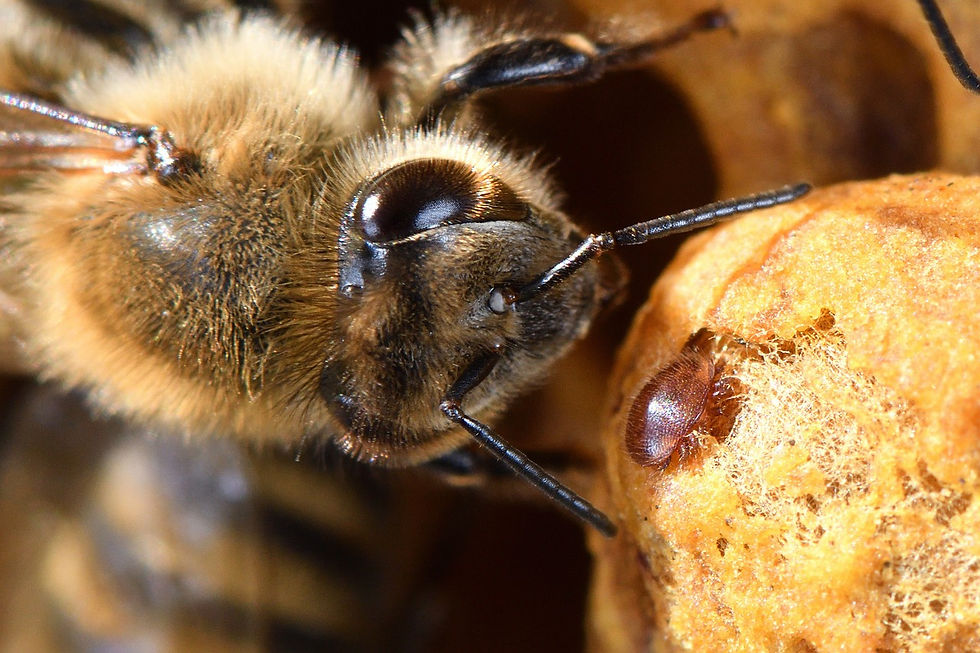AHBIC Varroa Update, 455 days of response
- bicwaorg
- Sep 21, 2023
- 3 min read
DATE: 20 September 2023

Varroa Eradication Deemed No Longer Feasible
On the 19th September, the National Management Group (NMG) met to discuss the recommendation of the Consultative Committee for Emergency Plant Pests (CCEPP).
The group of affected industry and government parties unanimously agreed that it was no longer practically feasible to achieve eradication and agreed that the response should transition to a management phase.
It was also agreed to implement interim arrangements to allow clarity for beekeepers whilst the transition to a management plan is negotiated by the CCEPP.
NSW has enacted a new Emergency Order, which begins operations under an interim management strategy until a formal Transition to Management document is formulated and confirmed via the NMG as a revised Response Plan.
This interim management strategy will be in place for a short period of time and will involve specific rules to minimise impacts on affected beekeepers whilst slowing the spread.
AHBIC has been advocating for the best outcome for beekeepers in this short-term strategy, including allowing beekeepers to now choose if they want their hives destroyed and ORC’s paid or to retain their hives.
As part of the new strategy, no further mandatory euthanasia will occur, and fipronil baiting will cease.
AHBIC’s position on transitioning to management AHBIC regularly consults with our 10 member body organisations from across Australia.
We provide these member bodies with regular updates and ask them for opinions on the feasibility of eradication.
It is up to these bodies as to how they arrive at their decision, but in the fast-moving, dynamic environment, there has been little time for widespread consultation among their members.
The AHBIC executive listens to their advice and decides the AHBIC position before every CCEPP and NMG meeting.
Opinions of the 10 member bodies have evolved from fully supportive of eradication at the end of June to a divided opinion in August to the majority position to transition today.
We recognise opinions are divided across the beekeeping community, which has made decision-making for the AHBIC executive incredibly difficult.
Industry Impact
Whilst the response has now moved into a transition phase, it is important to recognise the enormous sacrifices that have been made across the affected response zones by beekeepers during the eradication effort.
It is more important now than ever that our industry supports those who have lost hives and rally to support them to reestablish.
Our industry is resilient and has overcome repeated incursions of new pests, diseases, droughts, bushfires, floods and global pandemics, and our industry will learn to live with Varroa.
Changes Across NSW
All beekeepers must comply with the requirements set out in the current Emergency Order.
The State of NSW is now divided into two zones, the GREEN Suppression Emergency Zone and the YELLOW Management Emergency Zone.
GREEN Suppression Emergency and YELLOW Management Zones now fall under different rules.
It is important that beekeepers understand and comply with these rules before moving their bees. AHBIC will communicate over the coming days the details of these rules.

What does Transition to Management mean?
The NSW DPI, as the lead agency, is responsible for leading the development of the draft document to be presented to the CCEPP on Transition to Management.
This document will be used as an initial framework by the CCEPP to be discussed and finalised over the next few weeks.
The lead agency and affected industry parties will engage and collaborate to identify the aims, scope and objectives and set the expectations for transition to management.
It is expected that the transition to management provisions will enable a short term, nationally cost-shared program that will equip the honey bee industry to be able to deal with Varroa.
Once endorsed by both the CCEPP and the NMG, the response will then phase through to a Nationally agreed Response Plan for Transition to Management.
It is anticipated that the transition framework will have the following objectives:
1. Slow the spread of Varroa mite
2. Build industry resilience to the pest
3. Provide management options, including IPM recommendation and chemistry, and
4. Supporting pollination security
AHBIC will be advocating for the plan to be built around national education for beekeepers through workshops, webinars, videos and factsheets.
We will also be ensuring that beekeepers have access to management tools and treatment options accessible as the mite spreads and impacts beekeepers.
We expect that developing and negotiating of the next phase will be slow with all 26 parties at the CCEPP needing to agree to the plan.
Whilst much work has already been done, there will still be negotiations to get agreeance.
This is why there has not been a pre-existing management plan circulated throughout the industry as CCEPP negotiations could change any plans overnight.
You can reach out to AHBIC via:
Varroa Coordinator Bianca Giggins bianca@honeybee.org.au 0402 467 780






Comments